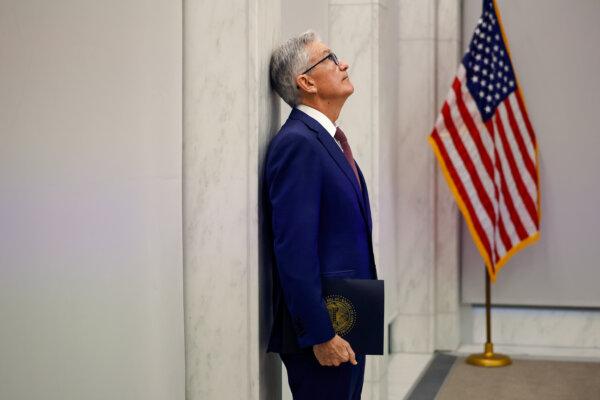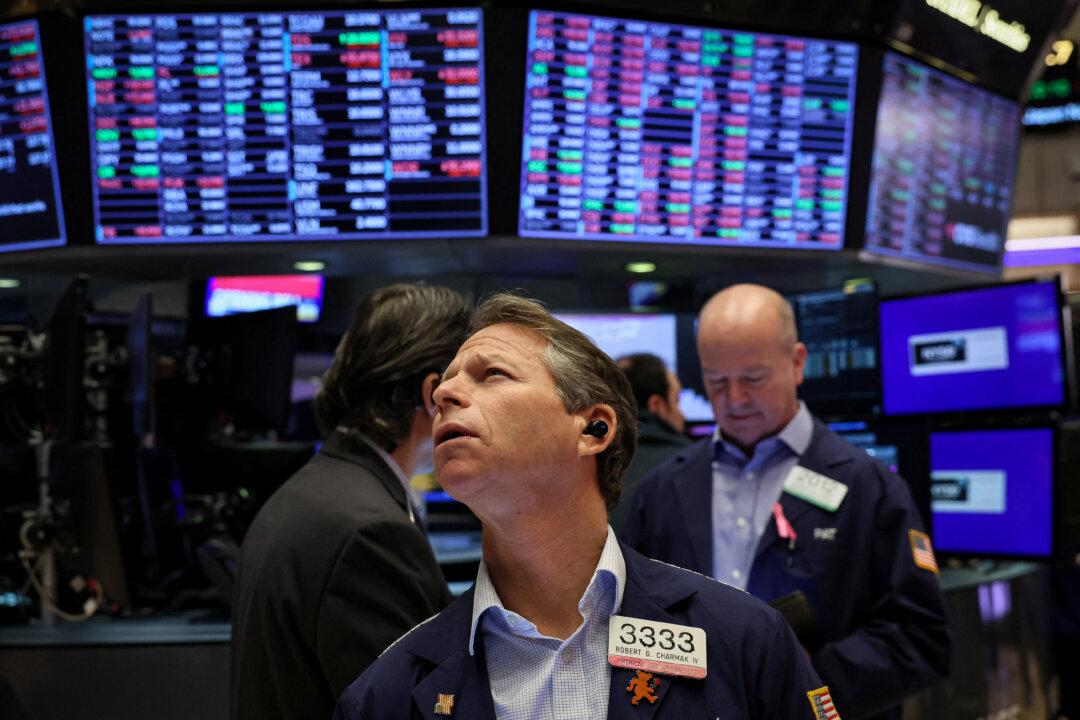The annual inflation rate ticked down to 3.1 percent last month, higher than the consensus estimate of 2.9 percent. Core inflation, which strips the volatile energy and food components, was unchanged at a higher-than-expected 3.9 percent.
On a monthly basis, the CPI and core CPI rose 0.3 percent and 0.4 percent, respectively. Both readings topped economists’ expectations.
When concentrating on the Fed’s preferred supercore inflation, a gauge of sticky inflationary pressures like labor-intensive services excluding energy and housing, the inflation picture is a bit trickier to navigate. It advanced to 4.3 percent year over year and swelled 0.8 percent from December to January.
Stocks have been flirting with record highs in recent sessions, fueled by expectations of the Fed pivoting on monetary policy. However, following the Bureau of Labor Statistics (BLS) data, it was a complete reversal for equities as the leading benchmark indexes plummeted.
Investors are worried because the latest CPI readings, especially core inflation, “keep a Fed rate cut off the menu for now,” according to Bryce Doty, the senior vice president and senior portfolio manager at Sit Investment Associates.
While the central bank has conceded that interest rates are in restrictive territory—a policy rate that decelerates the economy to curb inflation—it might not be enough to push the Fed to begin lower rates “until there is more certainty that inflation is fully contained.”
“In addition, we trust in certainties such as death, taxes, and the Fed being behind the curve and, as such, don’t expect rate cuts until the second half of the year,” Mr. Doty said in a note.
Shortly after the Feb. 13 opening, the Dow Jones Industrial Average plunged 1.35 percent, while the Nasdaq Composite Index declined 1.8 percent. The S&P 500 Index slipped 1.37 percent. This was the worst trading day since March 2023.
Investors fled to the greenback in the CPI aftermath. The U.S. Dollar Index (DXY), a gauge of the greenback against a basket of currencies, popped 0.68 percent and flirted with the crucial psychological level of 105.00. Year-to-date, the DXY is up 3.5 percent
Looking Ahead
With Fed Chair Jerome Powell already dismissing the possibility of a rate cut at next month’s meeting of the policy-making Federal Open Market Committee (FOMC), traders are now looking ahead to the May and June meetings.According to the CME FedWatch Tool, the futures market is no longer expecting a rate cut in May and signals policymakers will keep the federal funds rate unchanged at a range of 5.25–5.50 percent. Investors now think the Fed will pull the trigger on a rate cut at the FOMC meeting in June.

This might not be surprising based on a flood of recent comments by central bank officials.
“As I think about that commitment, I can’t help but look to lessons from the past. History tells many stories of inflation head-fakes,” he said in a Feb. 8 speech to the Economic Club of New York. “For example, at the end of the [Paul] Volcker era, inflation seemed to settle in mid-1986. The Fed reduced rates. But inflation then escalated again the following year, causing the Fed to reverse course. I would love to avoid that roller coaster if we can.”
The Waiting Game
How much longer will the Fed wait?It is a matter of playing the waiting game, says Kathy Jones, the chief fixed-income strategist at the Schwab Center for Financial Research, on X.
“Trends are in the right direction but not as good as expected,” she stated.
Short of a sharp economic downturn and a substantial uptick in unemployment, the central bank might bide its time for as long as it takes.
Considering that recession forecasts have diminished, and recent measurements suggest a decent start to 2024, Fed officials might be reluctant to champion rate cuts anytime soon, which could benefit the economy and even investors, says John Lynch, the CIO at Comerica Wealth Management.
“Fortunately, economic activity appears solid, and corporations are once again delivering profits to shareholders. A simple recalibration of rates by the Fed may prove more beneficial to the economy, and investors, than the six cuts consensus called for at the beginning of the year,” Mr. Lynch stated in a note.
The Atlanta Fed Bank’s GDPNow model estimate points to 3.4 percent growth in the first quarter, and the New York Fed Staff Nowcast anticipates a 3.3 percent expansion.
The January jobs report showed a lower-than-expected unemployment rate of 3.7 percent.
As for inflation, according to the Cleveland Fed’s Inflation Nowcasting estimate, annual inflation is projected to stay unchanged at 3.1 percent next month and rise 0.4 percent monthly.
Whether the financial markets can be as patient as the Federal Reserve remains to be seen. Until that day arrives, investors might need to “curb their enthusiasm,” according to Jerome Jean Haegeli, the group chief economist at Swiss Re Institute.
“With disinflation making strong progress, we expect the Federal Reserve to kick-start a cautious easing cycle in the second quarter of this year,” he wrote. “However, the strength of growth and upside risks to inflation render unlikely the rapid easing cycle that is being priced in futures markets.”
Peter Schiff, the chief economist and global strategist at Euro Pacific Capital, thinks there is “no chance” inflation will return to the Fed’s 2 percent target.
“Without additional rate hikes, there is no chance inflation will return to 2 percent,” wrote Peter Schiff, the chief economist and global strategist at Euro Pacific Capital, on X.
With more observers skeptical of the Fed not achieving its target objective anytime soon, investors might keep waiting for that initial rate cut.







